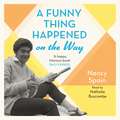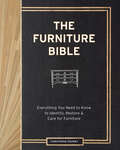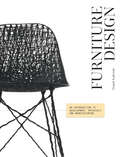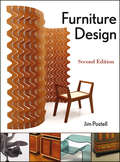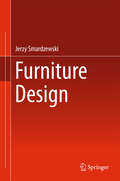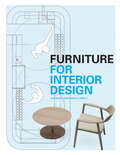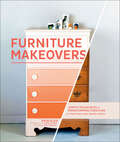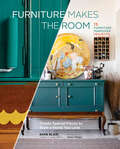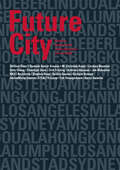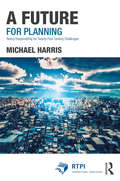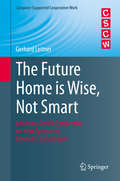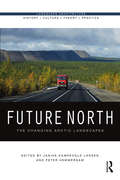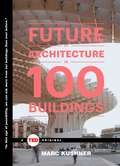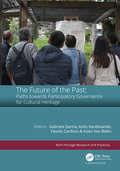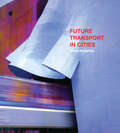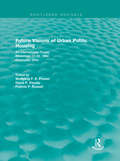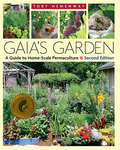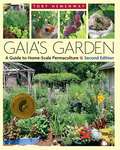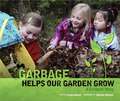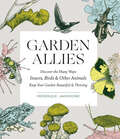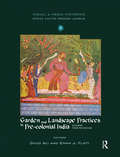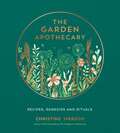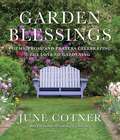- Table View
- List View
A Funny Thing Happened On The Way: Discover the 1960s trend for buying land on a Greek island and building a house. How hard could it be…?
by Nancy SpainThe superb classic memoir from a dazzlingly eccentric and endlessly fascinating author and feminist icon - a woman very much ahead of her time - including her time spent on the glorious island of Skiathos'A happy, hilarious book' Daily ExpressNancy Spain was one of the most celebrated - and notorious - writers and broadcasters of the 50s and 60s. Witty, controversial and brilliant, she lived openly as a lesbian (sharing a household with her two lovers and their various children) and was frequently litigated against for her newspaper columns - Evelyn Waugh successfully sued her for libel... twice.Nancy Spain had a deep love of the Mediterranean. So it was no surprise when, in the 1960s, she decided to build a place of her own on the Greek island of Skiathos. With an impractical nature surpassed only by her passion for the project, and despite many obstacles, she gloriously succeeded. This classic memoir is infused with all Spain's chaotic brilliance, zest for life and single-minded pursuit of a life worth living.Perfect for fans of A PLACE IN THE SUN and ESCAPE TO THE COUNTRY'Full of fun, and that zest of intelligence that never left her' Sunday Times
The Furniture Bible: Everything You Need to Know to Identify, Restore & Care for Furniture
by Martha Stewart Jen Renzi Christophe PournyChristophe Pourny learned the art of furniture restoration in his father’s atelier in the South of France. In this, his first book, he teaches readers everything they need to know about the provenance and history of furniture, as well as how to restore, update, and care for their furniture—from antiques to midcentury pieces, family heirlooms or funky flea-market finds. The heart of the book is an overview of Pourny’s favorite techniques—ceruse, vernis anglais,and water gilding, among many others—with full-color step-by-step photographs to ensure that readers can easily replicate each refinishing technique at home. Pourny brings these techniques to life with a chapter devoted to real-world refinishing projects, from a veneered table to an ebonized desk, a gilt frame to a painted northern European hutch. Rounding out this comprehensive guide is care and maintenance information, including how to properly clean leather, polish hardware, fix a broken leg, and replace felt pads, as well as recipes to make your own wax, shellac, varnish, stain, and more.
Furniture Design: An Introduction To Development, Materials And Manufacturing
by Stuart LawsonFurniture Design is a comprehensive guide and resource for students and furniture designers. As well as discussing pioneering contemporary and historical designs, it also provides substantive answers to designers’ questions about function, materials, manufacture and sustainability, integrating guidance on all of these subjects – particularly material and manufacturing properties, in one accessible and structured volume. Many leading contemporary furniture designers from around the world are included, with case studies carefully selected to highlight the importance of both material and manufacture-led design processes. The book is also intended to provide an insight into furniture design for those considering a university education in product and industrial design.
Furniture Design: An Introduction to Development, Materials, Manufacturing
by Stuart LawsonFurniture Design is a comprehensive guide and resource for students and furniture designers. As well as discussing pioneering contemporary and historical designs, it also provides substantive answers to designers’ questions about function, materials, manufacture and sustainability, integrating guidance on all of these subjects – particularly material and manufacturing properties, in one accessible and structured volume. Many leading contemporary furniture designers from around the world are included, with case studies carefully selected to highlight the importance of both material and manufacture-led design processes. The book is also intended to provide an insight into furniture design for those considering a university education in product and industrial design.
Furniture Design
by Jim PostellThe comprehensive guide to furniture design— expanded and updated Furniture designers draw on a range of knowledge and disciplines to create their work. From history to theory to technology, Furniture Design offers a comprehensive survey of the essential craft- and practice-related aspects of furniture design. Generously illustrated with photographs and drawings—including a new color section—this Second Edition features updated coverage of material specifications, green design, digital design, and fabrication technologies. It also features twenty-five case studies of furniture design that represent a broad selection of works, designers, and techniques, including recent designs produced within the last decade. The book explores: Furniture function and social use Form, spatial organization, and typological orders Structural integrity and composition Accessibility, universal design, human factors, and ergonomics The design process, from schematics through fabrication Materials, processes, and methods of fabrication Professional practice and marketing The history of furniture design, from prehistory to the digital age Complete with a glossary of terms and a comprehensive bibliography, Furniture Design, Second Edition is a one-stop resource that furniture designers will turn to regularly for the advice, guidance, and information needed to perform their craft.
Furniture Design
by Jerzy SmardzewskiMaximizing reader insights into the principles of designing furniture as wooden structures, this book discusses issues related to the history of furniture structures, their classification and characteristics, ergonomic approaches to anthropometric requirements and safety of use. It presents key methods and highlights common errors in designing the characteristics of the materials, components, joints and structures, as well as looking at the challenges regarding developing associated design documentation. Including analysis of how designers may go about calculating the stiffness and endurance of parts, joints and whole structures, the book analyzes questions regarding the loss of furniture stability and the resulting threats to health of the user, putting forward a concept of furniture design as an engineering processes. Creating an attractive, functional, ergonomic and safe piece of furniture is not only the fruit of the work of individual architects and artists, but requires an effort of many people working in interdisciplinary teams, this book is designed to add important knowledge to the literature for engineer approaches in furniture design.
Furniture for Interior Design
by Drew PlunkettThis comprehensive, practical guide explores how contemporary furniture is used within interior design to define a space, create division and enclosure, and alter or redefine circulation. Initial chapters illustrate the different contexts in which furniture is used, from the office and domestic interiors to retail and exhibition space; look at types of furniture, whether off-the-shelf or bespoke; and explore the new vogue for recycling and vintage. Later chapters examine both traditional materials such as wood and the more unusual such as stone and glass, while also explaining new methods of manufacture – such as Computer Numerical Controlled and Selected Laser Sintering. The final chapter looks at how a design is developed, the site surveyed, prototypes made and specifications and schedules drawn up.Furniture for Interior Design is a detailed, highly illustrated guide to specifying and placing existing manufactured furniture, but also shows the reader how to design, detail, and commission batch-produced furniture or one-off, site-specific pieces.
Furniture for Interior Design
by Drew Plunkett Sam BoothThis comprehensive, practical guide explores how contemporary furniture is used within interior design to define a space, create division and enclosure, and alter or redefine circulation. Initial chapters illustrate the different contexts in which furniture is used, from the office and domestic interiors to retail and exhibition space; look at types of furniture, whether off-the-shelf or bespoke; and explore the new vogue for recycling and vintage. Later chapters examine both traditional materials such as wood and the more unusual such as stone and glass, while also explaining new methods of manufacture – such as Computer Numerical Controlled and Selected Laser Sintering. The final chapter looks at how a design is developed, the site surveyed, prototypes made and specifications and schedules drawn up.Furniture for Interior Design is a detailed, highly illustrated guide to specifying and placing existing manufactured furniture, but also shows the reader how to design, detail, and commission batch-produced furniture or one-off, site-specific pieces.
Furniture Makeovers: Simple Techniques for Transforming Furniture with Paint, Stains, Paper, Stencils, and More
by Holly Becker Barb Blair J. Aaron GreeneFurniture Makeovers shows how to transform tired furniture into stunning showpieces. You'll never look at a hand-me-down dresser the same way again! The book offers 26 easy-to-follow techniques that can be applied to all different types of pieces, from bookshelves to desks: painting, applying gold leaf, wallpapering, distressing, dip dyeing, and more. In addition to the core techniques, author and Knack Studios founder Barb Blair shares 30 beautiful before-and-after makeovers from her studio and outlines how to achieve each look. With helpful step-by-step photographs, a visual glossary explaining all the tools and materials needed, and a lovely contemporary aesthetic, Furniture Makeovers is a treasure trove of ideas and instruction for the home decorator.
Furniture Makes the Room: Create Special Pieces to Style a Home You Love
by Barb Blair Paige FrenchKnack Studio founder Barb Blair is famous for her "knack" with furniture: spotting classic pieces and transforming them into modern showstoppers. In this inspiring book, Blair goes beyond the nuts and bolts of furniture refinishing to show how to style rooms with each customized piece. For instance, she transforms a well-worn coffee table with a painted ombré design, and then reveals how to incorporate it into a bright and sunny den, a cozy reading nook, and a cheerful bedroom. With instructions for 15 before-and-after furniture projects--dressers, tables, beds, armoire, and more--in Blair's signature bold style, a "toolbox" section detailing her favorite techniques and materials, and photos of dozens of inspiring interiors, Furniture Makes the Room unlocks the secrets to decorating livable rooms around statement pieces.
Future City
by Stephen Read Jürgen Job Van EldijkThis text focuses on cities as the dominant form of human settlement for the future, examining the transformation that is happening in urban connobations worldwide today. The last few decades have seen a rate of change and growth in cities that has never been seen before, resulting in giant metropoles with over twenty million inhabitants. This book tackles the causes of these changes, and looks at how the planning and design of cities can shape the urban future.
A Future for Planning: Taking Responsibility for Twenty-First Century Challenges (RTPI Library Series)
by Michael HarrisAs well as being spatial, planning is necessarily also about the future – and yet time has been relatively neglected in the academic, practice and policy literature on planning. Time, in particular the need for longer-term thinking, is critical to responding effectively to a range of pressing societal challenges from climate change to an ageing population, poor urban health to sustainable economic development. This makes the relative neglect of time not only a matter of theoretical importance but also increasing practical and political significance. A Future for Planning is an accessible, wide-ranging book that considers how planning practice and policy have been constrained by short-termism, as well as by a familiar lack of spatial thinking in policy, in response to major social, economic and environmental challenges. It suggests that failures in planning often represent failures to anticipate and shape the future which go well beyond planning systems and practices; rather our failure to plan for the longer-term relates to wider issues in policy-making and governance. This book traces the rise and fall of long-term planning over the past 80 years or so, but also sets out how planning can take responsibility for twenty-first century challenges. It provides examples of successes and failures of longer-term planning from around the world. In short, the book argues that we need to put time back into planning, and develop forms of planning which serve to promote the sustainability and wellbeing of future generations.
The Future Home is Wise, Not Smart
by Gerhard LeitnerThis book introduces the concept of the wise home. Whilst smart homes focus on automation technologies, forcing users to deal with complex and incomprehensible control and programming procedures, the wise home is different. By going beyond intelligence (or smartness) the wise home puts technology in the background and supports explicit (enhanced user-experience) as well as implicit (artificial intelligence) interaction adequate to the end-user's needs. The theoretical basis of the wise home is explored and examples for its application for future living are presented based on empirical studies and field work carried out by the author. Principles of HCI and the meaning of the home from differing scientific perspective are discussed and a research model (based on the concept of user experience (UX)) and iterations is introduced. This has resulted in field deployment guides being produced through a systematic development process. The Future Home is Wise, not Smart will be essential reading to home system developers, designers and researchers, responsible for smart home deployment or Ambient Assisted Living (AAL) who will get insights on how to follow a novel approach in developing and adapting smart home systems to their users' needs. Students with an interest in software design for pervasive systems will benefit by receiving information on how to develop and customise systems for the specific needs of living environments.
Future North: The Changing Arctic Landscapes (Landscape Architecture: History - Culture - Theory - Practice)
by Janike Kampevold Larsen Peter HemmersamThe changing Arctic is of broad political concern and is being studied across many fields. This book investigates ongoing changes in the Arctic from a landscape perspective. It examines settlements and territories of the Barents Sea Coast, Northern Norway, the Russian Kola Peninsula, Svalbard and Greenland from an interdisciplinary, design-based and future-oriented perspective. The Future North project has travelled Arctic regions since 2012, mapped landscapes and settlements, documented stories and practices, and discussed possible futures with local actors. Reflecting the multidisciplinary nature of the project, the authors in this book look at political and economic strategies, urban development, land use strategies and local initiatives in specific locations that are subject to different forces of change. This book explores current material conditions in the Arctic as effects of industrial and political agency and social initiatives. It provides a combined view on the built environment and urbanism, as well as the cultural and material landscapes of the Arctic. The chapters move beyond single-disciplinary perspectives on the Arctic, and engage with futures, cultural landscapes and communities in ways that build on both architectural and ethnographic participatory methods.
The Future of Architecture in 100 Buildings (TED Books)
by Marc KushnerThe founder of Architizer.com and practicing architect draws on his unique position at the crossroads of architecture and social media to highlight 100 important buildings that embody the future of architecture.We're asking more of architecture than ever before; the response will define our future. A pavilion made from paper. A building that eats smog. An inflatable concert hall. A research lab that can walk through snow. We're entering a new age in architecture--one where we expect our buildings to deliver far more than just shelter. We want buildings that inspire us while helping the environment; buildings that delight our senses while serving the needs of a community; buildings made possible both by new technology and repurposed materials. Like an architectural cabinet of wonders, this book collects the most innovative buildings of today and tomorrow. The buildings hail from all seven continents (to say nothing of other planets), offering a truly global perspective on what lies ahead. Each page captures the soaring confidence, the thoughtful intelligence, the space-age wonder, and at times the sheer whimsy of the world's most inspired buildings--and the questions they provoke: Can a building breathe? Can a skyscraper be built in a day? Can we 3D-print a house? Can we live on the moon? Filled with gorgeous imagery and witty insight, this book is an essential and delightful guide to the future being built around us--a future that matters more, and to more of us, than ever.
The Future of the Past: Paths towards Participatory Governance for Cultural Heritage
by Gabriela GarcíaThe Future of the Past is a biennial conference generally carried out during the commemoration date of the incorporation of Santa Ana de Los Ríos de Cuenca Ecuador as a World Heritage Site (WHS). It initiated in 2014, organized by the City Preservation Management research project (CPM) of the University of Cuenca, to create a space for dialoguing among interested actors in the cultural heritage field. Since then, this space has served to exchange initiatives and to promote coordinated actions based on shared responsibility, in the local context. The third edition of this conference took place in the context of the 20th anniversary of being listed as WHS and a decade of CPM as the Southern host of the PRECOM³OS UNESCO Chair (Preventive Conservation, Maintenance and Monitoring of Monuments and Sites). For the very first time, and thanks to the collaboration with the Raymond Lemaire International Centre for Conservation of the University of Leuven (Belgium), the conference expanded its local scope. On this occasion, contributions reflected round a worldwide challenge in the cultural field: revealing the paths towards participatory governance of cultural heritage. Participatory governance is understood as institutional decision-making structures supported by shared responsibilities and rights among diverse actors.
Future Transport in Cities
by Brian RichardsCities around the world are being wrecked by the ever-increasing burden of traffic. A significant part of the problem is the enduring popularity of the private car - still an attractive and convenient option to many, who turn a blind eye to the environmental and public health impact. Public transport has always seemed to take second place to the car, and yet alternative ways of moving around cities are possible. Measures to improve public transport, as well as initiatives to encourage walking and cycling, have been introduced in many large cities to decrease car use, or at least persuade people to use their cars in different ways.This book explores many of the measures being tried. It takes the best examples from around the world, and illustrates the work of those architects and urban planners who have produced some of the most significant models of "transport architecture" and city planning. The book examines the ways in which new systems are evolving, and how these are being integrated into the urban environment. It suggests a future where it could be mandatory to provide systems of horizontal movement within large-scale development, using the analogy of the lift, upon which every high-rise building depends. In so doing, future cities could evolve without dependence on the private car.
Future Visions of Urban Public Housing: An International Forum, November 17-20, 1994 (Routledge Revivals)
by Wolfgang F. Preiser David P. Varady Francis P. RussellFirst published in 1994, this book brings together the papers presented at the International Forum on ‘Future Visions of Urban Public Housing’ held on November 17-20, 1994 in Cincinnati, Ohio. Participants included public housing officials, academics, practitioners and public housing residents who came together to debate, compare and analyse practices and issues in urban and public housing in industrialised nations. The 55 collected papers address the following key topics: public housing policy; comprehensive neighbourhood planning for public housing; public housing in the urban design context; quality of design standards and guidelines for public housing; resident participation and enhanced self-sufficiency in public housing; public housing alternatives; revitalising and rehabilitating public housing; the Elderly, Children, and special populations in public housing. The findings suggest new directions for policy and agendas for action.
Gaia's Garden
by Toby HemenwayThe first edition of "Gaia's Garden," sparked the imagination of America's home gardeners, introducing permaculture's central message: Working with Nature, not against her, results in more beautiful, abundant, and forgiving gardens. This extensively revised and expanded second edition broadens the reach and depth of the permaculture approach for urban and suburban growers. Many people mistakenly think that ecological gardening, which involves growing a wide range of edible and other useful plants, can take place only on a large, multiacre scale. As Hemenway demonstrates, it's fun and easy to create a backyard ecosystem, by assembling communities of plants that can work cooperatively and perform a variety of functions, including: Building and maintaining soil fertility and structure Catching and conserving water in the landscape. Providing habitat for beneficial insects, birds, and animals. Growing an edible "forest" that yields seasonal fruits, nuts, and other foods. This revised and updated edition also features a new chapter on urban permaculture, designed especially for people in cities and suburbs who have very limited growing space. Whatever size yard or garden you have to work with, you can apply basic permaculture principles to make it more diverse, more natural, more productive, and more beautiful. Best of all, once it's established, an ecological garden will reduce or eliminate most of the backbreaking work that's needed to maintain the typical lawn and garden.
Gaia's Garden: A Guide to Home-scale Permaculture
by Toby Hemenway"Gaia" (not in the glossary) refers to the view that the Earth is a living, interconnected organism. The associate editor of The Permaculture Activist, who gardens in Southern Oregon, treats gardens as backyard ecosystems. The book includes organic garden design illustrations, and such useful information as the differences between immature and mature ecosystems, a garden designer's checklist, plants for attracting wildlife, and resources. Annotation c. Book News, Inc. , Portland, OR (booknews. com)
Garbage Helps Our Garden Grow: A Compost Story
by Linda GlaserWhat is that garbage doing next to the garden? It's not garbage. It's compost! Amazing things happen inside a compost bin. In go banana peels, grass clippings, and even an old jack-o'-lantern. Out comes compost. The compost goes into the garden to make the soil rich for new plants. Compost is good for the earth. Composting also helps us make less garbage. In this book, you can watch as one family makes compost for their garden and also learn how to start your very own compost bin!
Garden Allies: The Insects, Birds, and Other Animals That Keep Your Garden Beautiful and Thriving
by Frederique Lavoipierre"Explains how your garden can be a thriving, balanced community that gives more to your landscape than it takes." —Douglas W. Tallamy, author of The Nature of Oaks and Nature&’s Best Hope The birds, mammals, reptiles, and insects that inhabit our yards and gardens are overwhelmingly on our side—they are not our enemies, but instead our allies. They pollinate our flowers and vegetable crops, and they keep pests in check. In Garden Allies, Frédérique Lavoipierre shares fascinating portraits of these creatures, describing their life cycles and showing how they keep the garden&’s ecology in balance. Also included is helpful information on how to nurture and welcome these valuable creatures into your garden. With beautiful pen-and-ink drawings by Craig Latker, Garden Allies invites you to make friends with the creatures that fill your garden—the reward is a renewed sense of nature&’s beauty and a garden humming with life.
Garden and Landscape Practices in Pre-colonial India: Histories from the Deccan (Visual and Media Histories)
by Daud Ali; Emma J. FlattThis book presents a set of new and innovative essays on landscape and garden culture in precolonial India, with a special focus on the Deccan. Most research to date has concentrated on the comparatively well preserved gardens and built landscapes of the celebrated Mughal empire, giving the impression that they have been lacking in other times and regions. Not only does this volume provide a corrective to such assumptions, it also moves away from traditional art-historical approaches by posing new questions and exploring hitherto neglected source materials. The contributors understand gardens in two related ways: first as real or imagined spaces and manipulated landscapes that are often invested with pronounced semiotic density; and second as congeries of institutions and practices with far-reaching social ramifications for the constitution of elite societies. The essays here present a multi-disciplinary approach to the study of garden culture in precolonial India, and together suggest several new and exciting directions of enquiry for those working in the Deccan, Mughal India, and beyond.
The Garden Apothecary: Recipes, Remedies and Rituals
by Christine IversonFrom the best-selling author of The Hedgerow ApothecaryLearn how to make the most of your common garden plants like the herbalists of the pastUnlock the sustainable and ethical art of the apothecarist, and explore its rich folklore and history. Discover the hidden delights in your own garden and how to use them to make delicious edible treats, herbal cures and restorative beauty products. With photographs to help you safely identify edible plants and tips on how best to prepare and preserve your finds, this is the essential guide to enjoying the home-grown riches of your garden.Enjoy the therapeutic delights of the plants to be found in your own garden with easy-to-follow recipes.Heal dry hands with calendula balmEncourage restful sleep with cherry moon milkGet creative with a vivid blue ink made from cornflowersTry a borage infusion for tired eyesSoothe itchy skin with herbal bath teaBake a delicious nettle and lemon sponge cakeFreshen up with a rosemary mouthwashEnjoy a cool glass of red clover lemonadeAnd much more!
Garden Blessings: Prose, Poems and Prayers Celebrating the Love of Gardening
by June CotnerGarden Blessings is an eloquent tribute to the wonders of the garden, a place where our souls are nourished and memories grown. June Cotner is a legend in the world of gift books with her inspirational books that have sold nearly one million copies. Her books comprise a balance of about 20 percent classic and famous writers and 80 percent lesser-known, award-winning writers, which results in discovering many selections not found anywhere else. Ranging from childhood memories of planting and harvesting to celebrations of the changing seasons to contemplation on the joyful art of gardening, Garden Blessings is a moving collection of poems, prayers, and reflections that remind us of what really matters--making and sharing memories. Our gardens grow us and this collection of readings takes us down a path of pleasure. The overriding intention of Garden Blessings is to provide a heartwarming, spiritually-focused collection of uplifting prayers, prose, and poems that share a common joy and appreciation for the love of gardening and the many blessings that gardens bring to our lives. June Cotner, a #1 inspirational author, has gathered a bounty of garden blessings here, offering gems of wisdom that remind the reader and gardener in all of us just how much we learn from our gardens.
